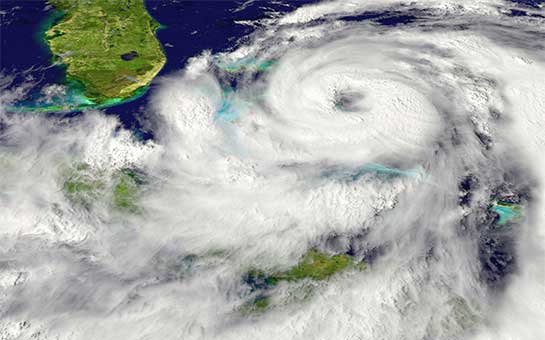Located in the Caribbean Sea to the east of Haiti, the Dominican Republic is a sun-washed island that is well known as a tourist's paradise. The island is known not only for lovely beaches, but also swamps and rainforests that offer a bewildering array of flora and fauna.
Before you visit the Dominican Republic, do not forget that you need travel insurance. Unfortunate events do occur. Should anything happen, you will want protection in place to prevent it from draining your bank account. Most tourists spend a short time here, no more than a week, but you have to be prepared.
Trip Cancellation Insurance for Travelers in the Dominican Republic – FAQs
If you suddenly find yourself unable to take your trip to the Dominican Republic, you’ll want to find a way to get the money you’ve already spent on the trip back. In the vast majority of cases, the only option that will allow you to do is trip cancellation insurance.
Why should I get trip cancellation insurance for my Dominican Republic travel?
Most of your prepaid trip expenses like hotels/resorts and airfare are nonrefundable. If you get sick and cannot travel, or a family emergency or other covered calamity forces you to abandon your travel plans, a trip cancellation insurance policy can reimburse for these expenses; provided the cancellation was for a covered reason.
What can be covered by trip cancellation insurance for the Dominican Republic?
Beyond just trip cancellation coverage, a travel insurance plan for the Dominican Republic can cover instances including:
- Emergency medical treatment
- Trip interruption
- Travel delay
- Loss of baggage
- Add-on coverage that can allow you to cancel for any reason
The Dominican Republic’s Most Popular Places for Travel
One thing you can be sure of – a tourist will never get bored during their stay in the Dominican Republic. There are fantastic beaches at Punta Cana and La Romana. But this island offers much more than the sun and the sea. Head inland, and you will find quite a few gems.
Zona Colonial
This is the old city area in the capital, Santo Domingo. The architecture is Spanish mid-17th century and exceptionally charming. Calle El Conde, or Main Street, has shops selling memorabilia. There are tiny lanes that dart off here and there and lead to museums and churches galore. Of special mention is the Catedral Primada de América, the first cathedral on the western side of Atlantic.
Playa Dorada
Playa Dorada is an enormous beach that is several kilometers in length. Your feet will sink deep into the soft golden sand, and the surrounding mountains will take your breath away. Unlike busy Punta Cana at the Playa Dorada, you can relax in silence and restore yourself.
Kite Beach
Situated at the southern tip of the island at Cabarete, this place is quite unique. It is famous for kite flying. Hundreds of kiteboarders head here to take advantage of the strong winds. For the uninitiated, kiteboarding is an energetic sport that consists of standing atop a surfboard while being pulled by a huge sail or kite. Not only is it exhilarating to participate in, it's also just as fun to observe from a distance.
Key Guidelines for Travelers in the Dominican Republic
Although the Dominican Republic is extremely welcoming to tourists, there are some things to keep in mind before visiting in order to help your trip go as smoothly as possible.
Crime
The Dominican Republic does suffer from a fairly high crime rate. Pickpocketing and robbery can be common. To best deal with this, leave all unnecessary items safely in your hotel room, and only carry what you need. Keep cash and valuables on your person in a money belt; not in an easily pilfered wallet or purse.
Water Safety
Not every beach or swimming pool in the Dominican Republic will have a lifeguard on duty. Even if there is a lifeguard, they may not have all of the necessary safety equipment. Make sure to keep an eye on young children around any water features, and never enter the water if you are under the influence of alcohol.
Hazardous Sports
The Dominican Republic is a haven for ATV riding, horseback riding, and watersports like snorkeling and scuba diving. If you choose to take part in any of these activities, make sure the operator is licensed and reputable. Also, check your insurance coverage to be sure that the activity is not excluded. Certain activities may require additional hazardous sports insurance.
Getting Around
For local transit in the Dominican Republic, use tourist taxis. They may be more expensive than local taxis and motorcycle taxis, but the vehicles tend to be safer and more reliable. You can also choose common rideshare apps such as Uber.
Natural Risks
Due to its location, the Dominican Republic can experience tropical storms and hurricanes. When booking and leading up to your trip, be sure to keep an eye on tropical weather forecasts, and ensure that you understand how the insurance you’ve purchased will or will not cover tropical storms and hurricanes.
Before You Travel to the Dominican Republic – Do This
- Fill out a COVID Traveler’s Health Affidavit prior to departure to the Dominican Republic. It is required of all travelers, and is accessible online.
- Speak to your healthcare provider and confirm that you are up-to-date on all necessary vaccinations.
- Choose to take your trip with maximum peace of mind, and purchase travel insurance.


